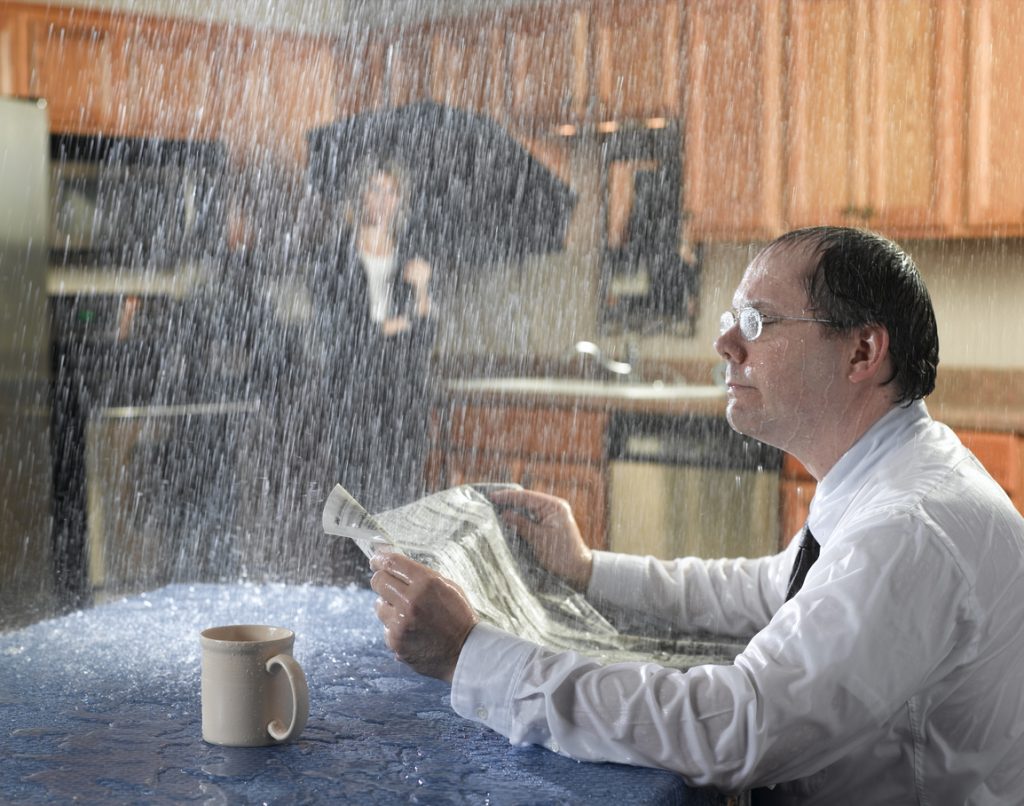(Note: This guest blog is by Steve Thomas, president of Roof Leak Detection Company, Inc., a Certified Testing Laboratory located in South Florida which specializes in testing and consulting services for commercial and industrial properties).
The past few years have taught building owners, property managers, and condominium managers an uneasy lesson about roofs. Most have discovered that if their roofs fail, they may still face a fight with their insurance company to recoup their losses. This dilemma can be avoided in many instances if one simple rule is followed: Document the condition of your roofing system.
What steps should a condominium association take in documenting the condition of its roofing system? It is my recommendation that, at a minimum, if your building has a sloped roof, you should have photographic documentation of your roof from all angles. At the very least, this will prove that your roof was intact prior to any storm or other damage. It is further recommended that a professional (roof consultant, engineer or architect) evaluate the condition of your roofing system assembly. This will allow you to make any recommended or necessary repairs prior to hurricane season. These repairs should be documented, and you should retain a file of all roof inspections and repairs.
Flat roofs are a different story. For a flat roof, at a minimum, you should have a roof moisture survey performed by a licensed, certified roof testing company. This moisture survey will provide you with scientific data showing the condition of your roof. Speaking from my own experience, in every instance where my company performed a moisture survey (prior to the storm event) on a roof that then failed, the insurance company accepted the report and the long litigation process was not necessary. Why is this? The answer is two-fold.
First, a licensed, certified roof testing company is not a roof contracting company or material manufacturer. The opinion of a roofing testing company is considered unbiased and therefore lends more credibility to the report.
There are three different methods of roof moisture surveys that can be performed. It is very important to have the proper type for your roofing system conducted. Not all moisture survey methods are the same, and many types of moisture surveys are not applicable to many roofs.
1. Infrared Method: Infrared cameras have come a long way in the past 12 years. Many of the cameras have a high resolution that can distinguish wet areas of insulation. It is my opinion that infrared cameras, although useful, are not the best way to measure moisture infiltration into many types of roofing systems. Infrared measures surface heat differential; wet insulation will hold heat longer than dry insulation thus allowing the infrared image to locate the trapped moisture. The biggest drawback to the infrared method is that many of the roofing systems do not have the type of composition to render the infrared image effective.
The following are examples of the types of roofing systems that should not be analyzed using an infrared camera.
a. All roofing system with light weight concrete. The moisture in light weight concrete will migrate to the bottom of the roof and thus become undetectable by the infrared camera. There is no surface temperature differential, so the infrared method is not effective in finding trapped moisture on any of these types of roofing systems.
b. Reflective coated roofing systems. A reflective coating or white surfaced roof does not sufficiently heat up during the day. This will inhibit the wet insulation from heating up so it can be recognized by the infrared image.
c. Building with multi elevations or roof top equipment that may shade areas of the roof for extended periods of time. These shaded spots do not sufficiently heat up the insulation so it can be identified by the thermal image.
d. Any building with two roofing systems. The infrared only sees surface heat differential.
2. Nuclear Method: The Troxler Nuclear Moisture Meter is used to detect moisture as deep as 8" into the roofing system in roughly a 10 foot x 10 foot square (the grid can be smaller). It will peer through all layers of insulation and can be used on all types of roofing systems. On projects where one roof has been installed over another or on multi layered systems, a nuclear moisture survey is the only moisture detection method that will accurately locate moisture located in the bottom layers of insulation installed to the deck.
3. Electrical Capacitance Method: This method is best used on single ply roofs (not E.P.D.M. Rubber though) with no insulation over a wood deck. The electrical capacitance meter in our opinion does not have the depth capability to make an accurate survey of trapped moisture. Furthermore, aluminum-coated built up and modified roofing should not be tested using this method.
The second reason for performing a moisture survey prior to a storm event is that the moisture survey can also be used as a guide for making any necessary repairs to the roof. Performing a moisture survey will also show the insurance company that you are performing regular inspections. This is important because the condition of a roof can change from year to year. By performing this evaluation, it should be clear to the insurance company that you are maintaining your roofing system as required by all roofing material manufacturers.
A question my company gets quite often is, “Why not have our roofing company do the evaluation?” My answer is quite simple. Would you put a band-aid on a broken leg? Of course not! Repairing a flat roof without first performing a moisture survey is foolish and could cost 20 times the amount of the moisture survey. The moisture survey will pinpoint the exact trouble areas so that an accurate repair can be made, costing you thousands less.
Another dilemma for all building owners is their belief that because their roofing system is relatively new annual inspections are not necessary. Nothing could be further from the truth!
There are three phases of evaluation after a hurricane. The initial damage assessment, the recommendation process, and the one we see most — “my roof blew off and the roofing contractor put a new roof on my building” phase. The last phase lasts the longest and here is why. After a hurricane, many contractors are often understaffed and are forced to hire unskilled labor. Material is scarce and there are many damaged roofing systems. This leads to disaster. My company’s personal experience is that we are finding, on average, two roofs a week that were improperly installed, did not have proper local county inspections, and were done by unlicensed contractors.
If you have had a roof system installed in the past two years, I highly recommended that the roof be evaluated. Even a bad roof can last two years. The skilled roofer will pay close attention to flashing details. An unskilled one will splash roofing cement on it and that can last two years. Don’t think it is just small unknown contractors. I have seen many of the larger established contractors have the same problem because of the immense amount of roofing work.
A proactive approach to the most important component of your building (the roof protects all the contents inside) can save countless dollars and monumental headaches. Insurance companies are always looking for a way OUT of paying a claim. Do the best you can to deny them this opportunity. Don’t be penny-wise and pound foolish. The cost for this type of documentation is miniscule compared to the cost of high deductibles, a new roof, attorney fees, or any associated storm-related cost. I can attest to the fact that if every building owner took the approach of documenting the condition of his roof there would certainly be less confusion for all parties involved should another catastrophe occur.
Steven M. Thomas CRI-RC
President
Roof Leak Detection Co., Inc.


